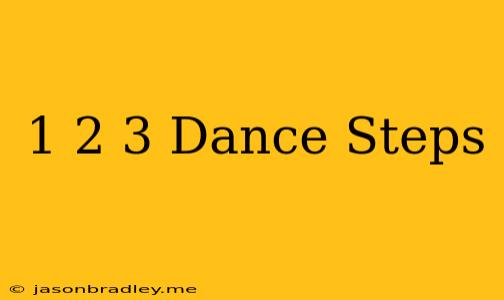Mastering the 1, 2, 3 Dance Steps: A Beginner's Guide
The 1, 2, 3 dance steps are a fundamental building block for many popular dances. They are simple to learn and can be easily adapted to different rhythms and styles. This guide will break down the basic steps and offer tips for mastering them.
Understanding the Basics
The 1, 2, 3 steps are essentially a three-count sequence that involves stepping forward, sideways, and then back. This creates a simple, rhythmic pattern that is easy to follow.
Here's a breakdown:
- Count 1: Step forward with your dominant foot.
- Count 2: Step to the side with your other foot.
- Count 3: Step back with your dominant foot, bringing your other foot to meet it.
Important notes:
- The steps should be taken in a controlled and deliberate manner.
- Keep your knees slightly bent and maintain good posture.
- Practice the steps slowly at first, gradually increasing the speed as you become more comfortable.
Variations and Adaptations
The basic 1, 2, 3 steps can be modified in a variety of ways to create different dance styles and patterns.
Here are a few examples:
- Adding a turn: After stepping back on count 3, you can add a slight turn to the right or left.
- Changing the direction: You can reverse the steps, stepping back, sideways, and then forward.
- Combining steps: You can chain together different variations of the 1, 2, 3 steps to create more complex dance sequences.
- Adding arm movements: Incorporate simple arm movements like a "reach and point" or "cross-body" to add visual interest and rhythm.
Tips for Success
- Start with a basic rhythm: Practice the steps to a simple beat, like a metronome or a drum track.
- Mirror your reflection: Stand in front of a mirror to check your form and ensure you are performing the steps correctly.
- Practice with a partner: If you have a dance partner, practice together to improve your coordination and timing.
- Stay relaxed and have fun: Don't be afraid to experiment and find your own personal style.
Conclusion
The 1, 2, 3 dance steps are a fantastic starting point for anyone interested in learning to dance. They are simple, versatile, and can be used as a foundation for a wide range of dance styles. With practice and a little creativity, you can master these steps and develop your own unique dance moves.
